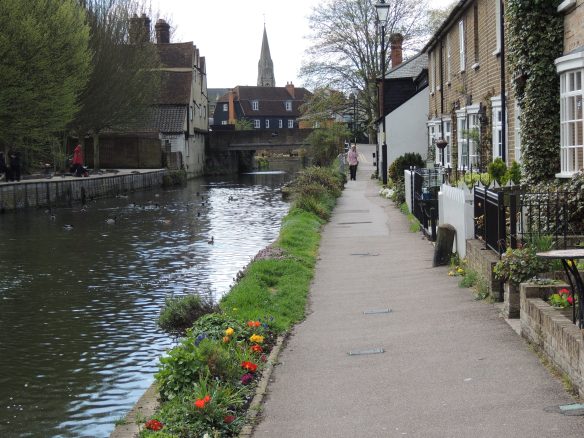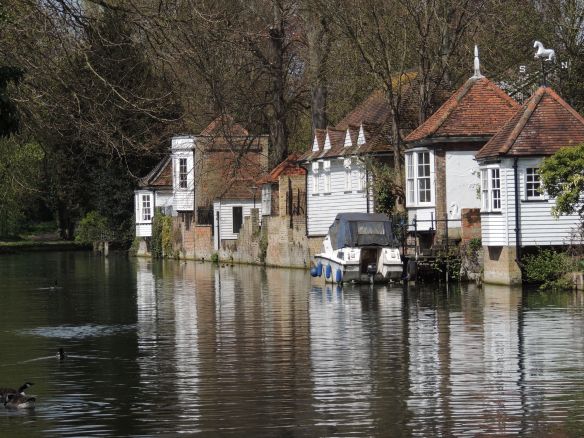What treasures there are in our world for us to come across! I say “come across” because the word “discover “ is much misused by travel companies and entertainment venues. You know what I mean “Come and discover the hidden mysteries of the Tower of London”. I am not sure they would really like us all turning up with archaeologist’s trowels and beginning to dig up their lawns.
But travelling by narrow boat in that gentle manner, making time to look around and research what we are seeing, gives us opportunity to “come across” so much that we may other rush past.
After my trip up the Stort I came back to the Lee and turned north to visit Ware and Hertford, which is as far as a boat can travel up the Lee. I was surprised to learn that the Lee actually starts at Luton, not that far from the Grand Union, and wends its way south, south east to Hertford.
The main industry that the canals served were the grain industry, hence it is not surprising to find malting houses and brewers near the canal. What was a delight were the eighteenth century gazebos overhanging the river. It is said that they belonged to the coaching inns, the original road that became the northbound A10 ran past these inns.
There is little remaining of the Hertford castle, a motte and a later curtain wall, with an even later impressive brick building called the Gatehouse. Like most castles it had various dignitaries or famous prisoners within its walls during its history. One notable event was the synod of 673 where numerous bishops were brought together by the Archbishop of Canterbury, that has been considered the beginnings of the church of England. The wag-tails and moor-hens feeding along the river seemed unimpressed by this background.
Along the canal/river between Ware and Hertford nineteenth century 3 storey brick building called the Gauge house. This marks the start of an man made river, the New River built between 1608 and 1613 and later supplemented with water from the Lee. It was built to take clean water for drinking into London. It still runs all the way from these meadows down into London, it even has its own aquaduct over the M25 near Enfield (a much later addition). It is amazing to think that all these canals and new rivers were dug using just spades by man power. Digging a trench to put spuds in seems bad enough, let alone 27 miles of a new river!



